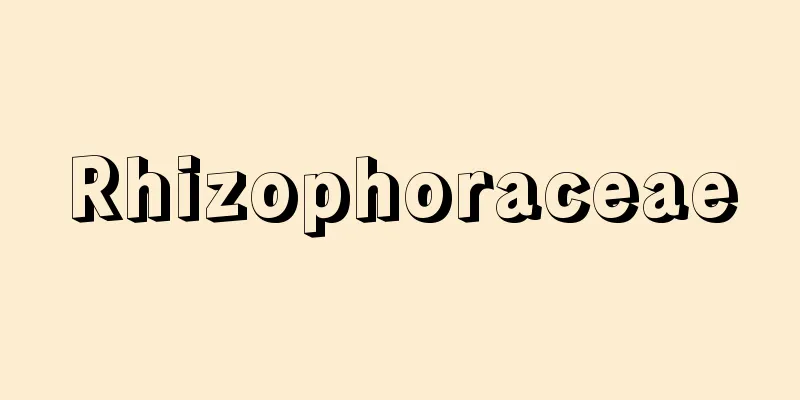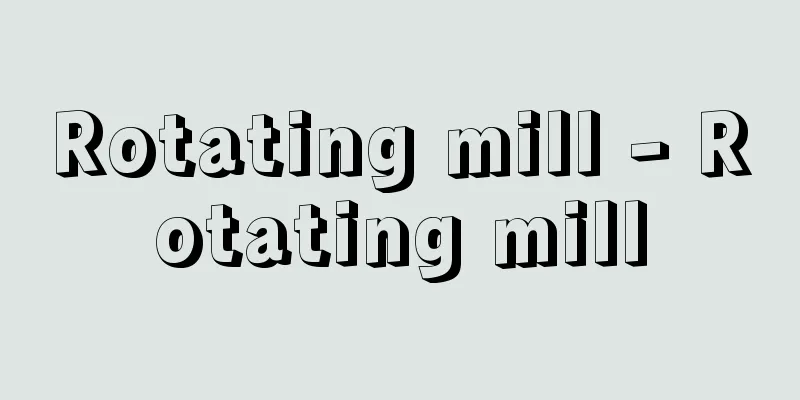Improved wood

|
A general term for materials that are made from almost all currently used natural wood species, and that have been physically and chemically treated to improve their properties, which are not found in natural wood or are difficult to obtain. Processed wood, or more recently, wood materials, is a general term for wood-based materials. They are mainly used for construction and furniture. Natural wood has beautiful appearance, good feel, is easy to work with, is lightweight and strong, and has moderate properties against humidity, heat, and sound, but it also has disadvantages such as inhomogeneity, expansion and contraction due to humidity and water, warping, warping, burning due to fire, and attack by organisms such as rot fungi and termites. The name "improved wood" comes from the fact that the aim is to improve the disadvantages of wood while making use of its advantages, but another important point is that it is possible to make long and large lumber or wide boards from waste wood, small diameter lumber, or unsuitable lumber that cannot be used as it is, or to make materials suitable for the intended purpose. Improved wood can be classified according to the properties that have been improved or imparted to it, as follows. (1) The purpose is to reduce unevenness in wood, such as knots, increase its strength, and produce long timber (laminated timber, laminated veneer lumber). (2) The purpose is to reduce the anisotropy of wood's strength, expansion and contraction, etc., and to obtain boards with a relatively large area (plywood, particle board, fiberboard). (3) Wood that has been treated with synthetic resin injection and paraffin injection to prevent expansion and contraction, warping, cracking, etc. caused by moisture and humidity. (4) Wood that has been made more resistant to decay fungi and termites (preservative-treated wood, anti-termite treated wood). (5) Materials that are fire-resistant (fireproof wood, fireproof painted wood, drisol, hard wood chip cement board, wood wool cement board). (6) Those with special purposes such as electrical insulation or abrasion resistance (hardened laminates, WPC). In addition, many wood materials are secondary processed products in which the surface is painted or covered, and in a broad sense these are also included in improved wood. Improved wood generally has certain properties, but in exchange for these, it also has properties that are inferior to natural wood in some areas, so it is important to carefully consider the conditions of the place where it is used and the purpose of its use. Conversely, it is possible to deal with the shape, dimensions, strength, etc. required by the user, so it can be designed and processed rationally. In response to the recent depletion of wood resources, improved wood also plays an important role in saving resources by making effective use of previously unused raw materials such as small diameter lumber and unsuitable lumber. [Arima Takashi] "Wood Industry Handbook" edited by Forestry Research Institute (1982, Maruzen) Source: Shogakukan Encyclopedia Nipponica About Encyclopedia Nipponica Information | Legend |
|
現在利用されるほとんどすべての樹種の天然木材を主要原料として物理的、化学的な処理を施し、天然の木材にない、あるいは得がたい性質に改良した材料の総称。加工木材、最近では一般的な総称として木質材料とよばれている。おもに建築・家具用材として用いられる。天然の木材は、外観の美しさ、感触のよさ、工作の容易さ、軽量で高い強度、さらに湿気、熱、音などに対して適度な特性をもつ反面、不均質性、湿気、水分による膨張収縮、狂い、反り、火による燃焼、腐朽菌やシロアリのような生物に攻撃を受けるなどの短所がある。木材を原料としてその長所を生かしながら短所を改良することを目的としたところから改良木材という名が与えられているが、もう一つの重要な点は、廃材や小径材、あるいはそのままでは使い道のない不適正材から、長大材や広幅板などをつくったり、使用目的に適合した材料をつくれることである。改良木材を、改良したあるいは付与した性質によって区分すると次のようになる。 (1)節など、木材のもつ不均一性を少なくし、強さを増し、長大材を得ることを目的としたもの(集成材、単板積層材)。 (2)木材の強さ、膨張収縮などの異方性を少なくし、比較的大きな面積の板を得ることを目的としたもの(合板、パーティクルボード、繊維板)。 (3)木材の水分、湿気による膨張収縮、狂い、反り、割れなどを防ぎ、耐水性、耐湿性を高めたもの(合成樹脂注入処理木材、パラフィン注入材)。 (4)腐朽菌やシロアリに対して抵抗性を高くしたもの(防腐処理木材、防蟻(ぼうぎ)処理木材)。 (5)火に対して燃えにくくしたもの(防火木材、防火塗装木材、ドリゾール、硬質木片セメント板、木毛(もくもう)セメント板)。 (6)電気絶縁性や耐摩耗性のような特殊な目的をもたせたもの(硬化積層材、WPC)。 そのほか、木質材料は表面を塗装したり被覆する二次加工品も多く、広義にはこれらも改良木材に含まれる。 改良木材は、ある特定の性質を付与させるかわりに、部分的には天然の木材よりも劣る性質ももっているのが一般的で、使う場所の条件や使用目的を十分検討して使うことが肝心である。また逆に、使う立場から要求される形状、寸法や強さなどに対処することも可能なので合理的な設計や加工ができる。改良木材は近年の木材資源の枯渇に対応するために、小径材や不適正材などのような、従来未利用の原料を有効に使用しているという省資源的な役割も重要である。 [有馬孝] 『林業試験場編『木材工業ハンドブック』(1982・丸善)』 出典 小学館 日本大百科全書(ニッポニカ)日本大百科全書(ニッポニカ)について 情報 | 凡例 |
<<: Glauconite (English spelling)
>>: Improved clothing - Kairyofuku
Recommend
Corporation Law - Kabushiki Gaishaho
...The main points of the law were (1) to facilit...
Koptos (English spelling)
An ancient Egyptian city on the east bank of the N...
Good flow - Koryu
The name of a school of Noh performers who play th...
Khalaj
...a powerful branch of the Pashtun tribes of Afg...
dog rose
...All of these are confirmed or presumed to be h...
Door-type
This is a tax law issued by the Jin Dynasty in 28...
Diffuse superficial keratitis
...When exposed to large amounts of ultraviolet l...
'ayyārūn (English spelling) ayyarun
…Under these social conditions, the 'ayyārūn,...
lucidophyllous forest
...The leaves are also characterized by their poi...
α-ketoglutaric acid - alpha-ketoglutaric acid
Chemical formula: HOOCCOCH 2 CH 2 COOH. It is a me...
Setsu Tanno - Setsu Tanno
Labor activist. Born in Obama Town, Fukushima Pre...
Wellington Koo, VK (English spelling)WellingtonKooVK
…Born in Jiading, Jiangsu Province, he went to th...
Mouse-ear chickweed
…In recent years, the Dutch chickweed C. glomerat...
Blue Ash - Blue Ash
A deciduous tree of the family Oleaceae (APG clas...
Bessenyei G.
…After the Ottoman Empire was expelled in the lat...









